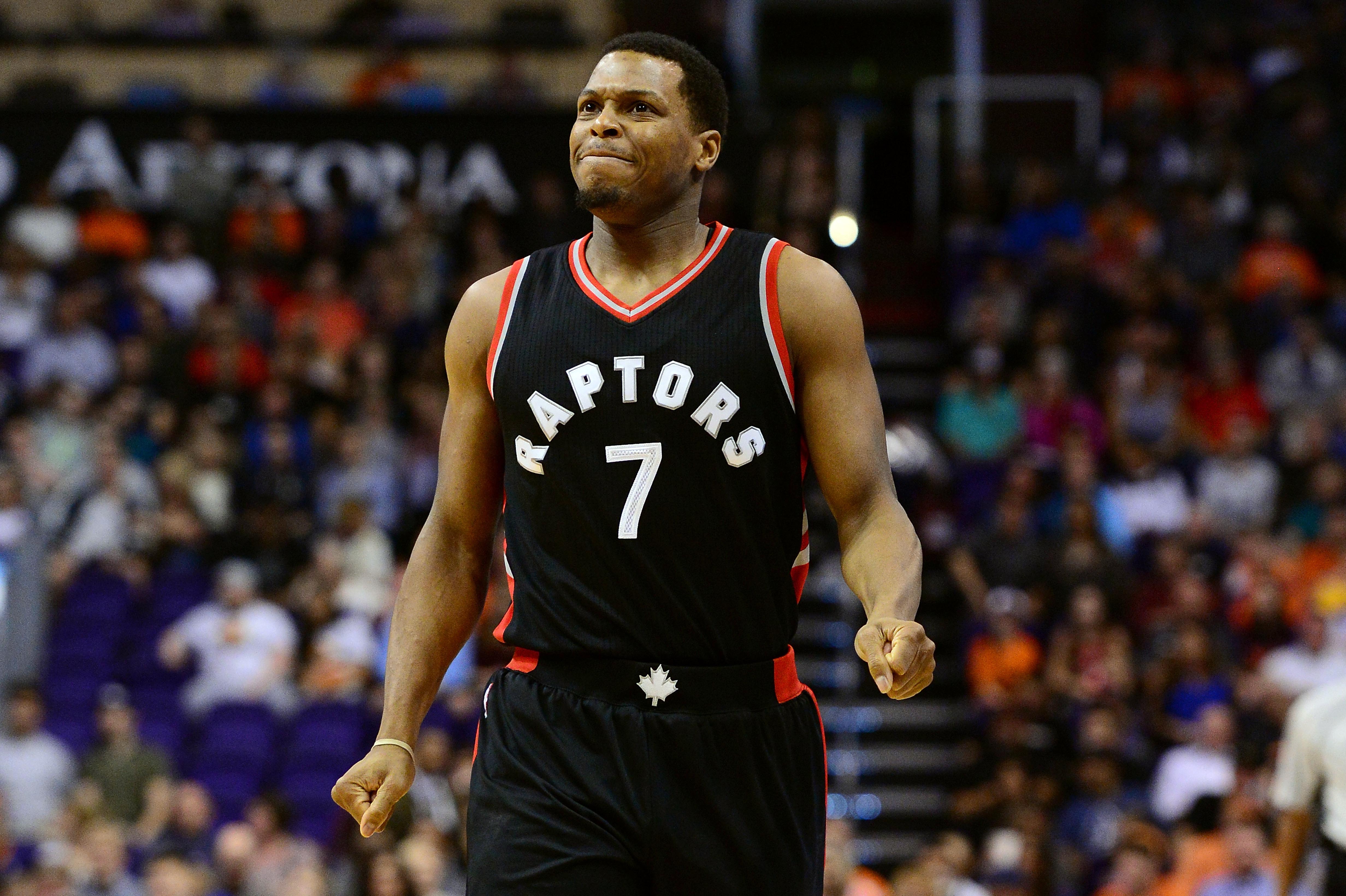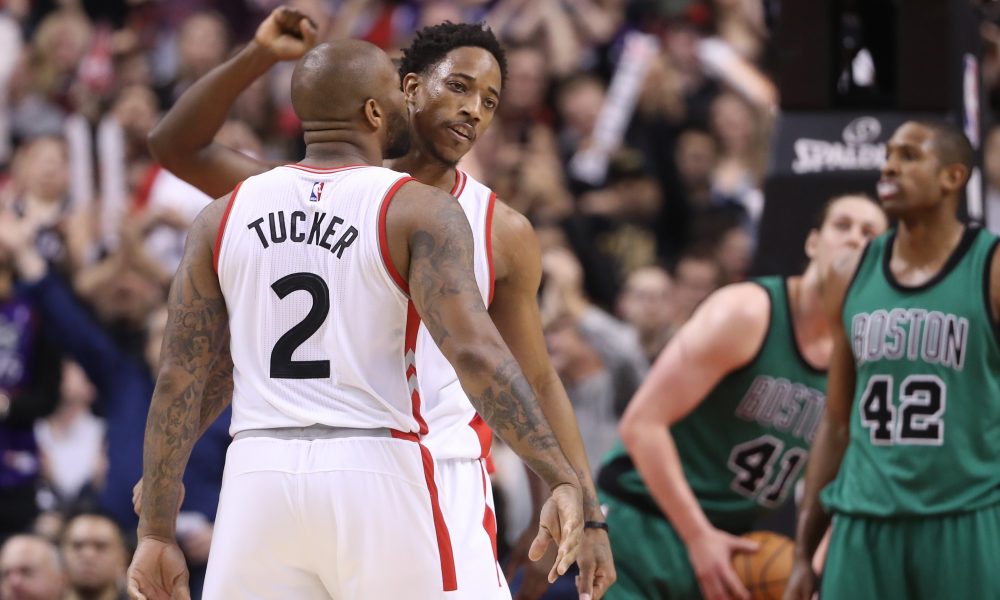The news broke about two hours before the tip-off of the Raptors playing the Celtics, but the news happened almost two weeks ago. Kyle Lowry has an injured wrist, which is both all the information you need and not nearly enough information to really assess the damages, in that it neither tells us what the injury truly is or what the time frame for recovery will really be. It’s obvious the three-time All-Star is important to the Raptors, but let’s try to measure the impact of his absence based on the past few seasons.
This is the third year in a row where Lowry, after being near the top of the league in minutes for several months, suffered an injury late in the season that threatens to bleed into and affect his playoffs. While team success has largely depended on him being on the floor, with the team generally struggling when he sits, it still might be worth considering the wear and tear on him and the fact that he hasn’t proven to be the most durable player, and, assuming he stays with the Raptors this summer, try to reduce his minutes in future years. With Delon Wright’s growth, and Cory Joseph still under contract, it should definitely be possible to find room to get Lowry’s minutes down and have him better rested and healthier going into the post-season in future years.
With the injury itself, my initial reaction, as well as likely the reaction of many other fans, was to be frustrated with the organization for allowing him to play in the All-Star Game and participate in the Three-Point Contest with a lingering injury, but based on comments from both Lowry himself and the team it appears that he didn’t inform the team of the injury after the Charlotte game and thought it would be a short-term problem.
The team without Lowry this season, prior to last night’s game, had a -5.3 net rating when he sat, and the offensive rating and defensive rating when Lowry was off the floor are both lower than with any other single player off the floor. The problems without him are almost across the board, with the lowest off-court assist rating, true shooting percentage, and even rebounding percentage(on both ends) on the team. That last one is hard to explain, but it’s a large enough sample size that it’s hard to completely disregard.
Interestingly, and once again in a long-term trend, these numbers actually get worse with DeMar DeRozan on the floor and Lowry sitting. The team has a -8.4 net rating in these situations, and a 118.9 defensive rating is largely the cause of the problems there. With only 37% of baskets coming assisted and 53.9% of all baskets scored being unassisted two-point attempts, there’s an undue burden placed on players creating their own offense rather than creating as a unit. Lowry is the best playmaker on the squad, and the team generally doesn’t run an assist heavy offense, but there definitely needs to be a concerted effort to play as a group and make a better use of teammates to create offense and keep others involved.
The other impact that’s not as easy to track statistically comes from the absence of both Lowry and the recently traded Terrence Ross, who were the best three-point shooters on the Raptors. While both Serge Ibaka and PJ Tucker are reasonable shooters from long distance, neither of them is quite the threat that Lowry and Ross provide, and this allows opponents to collapse the paint and take away opportunities in the post, which will primarily impact Jonas Valanciunas. It was visible versus Boston that JV couldn’t find opportunities, as the passing lanes just weren’t open for him, despite the Celtics small front court that you’d normally expect him to dominate.
Despite all the evidence, however, last night showed several promising signs for the Raptors should there be a prolonged absence for Lowry. The team’s defense was much improved by the toughness provided by Tucker and Ibaka, and if the Raptors embrace that identity, they should be able to find success even without their floor leader. During the first quarter of the game, we saw much of the same offense of players only creating for themselves to the detriment of the team, and that bled into the defensive effort. As the game progressed, the offense moved the ball more and worked together while the defense got stronger, and they’ll need to embrace that hard nosed style of play that Tucker embodied during the Celtics game in order to find wins and remain a contender. DeMar DeRozan was spectacular in creating for himself, as we’ve come to expect this season, but he also more and more as the game went on was a facilitator, taking it on himself to keep the other guys involved and active, which is a sign of this year’s progress in his game.
While an evidence based approach, derived from the last several seasons, says that Toronto will be in trouble without Lowry, there is definitely now a blueprint for how to win despite his absence. It’s up to Dwane Casey and the players on the court to follow that and not fall into old, bad habits instead. With any luck, Lowry will be back in due time anyways and this will be a non-issue, but the ambiguity around the way the team is handling the injury suggests that this will not be a short-term situation and may be something that lingers through the remainder of the regular season. If the Raptors can find ways to win games without him though, it may provide Kyle the time he needs to rehabilitate the wrist and get fully healthy prior to the postseason, rather than rushing back to try to save the team from itself.



